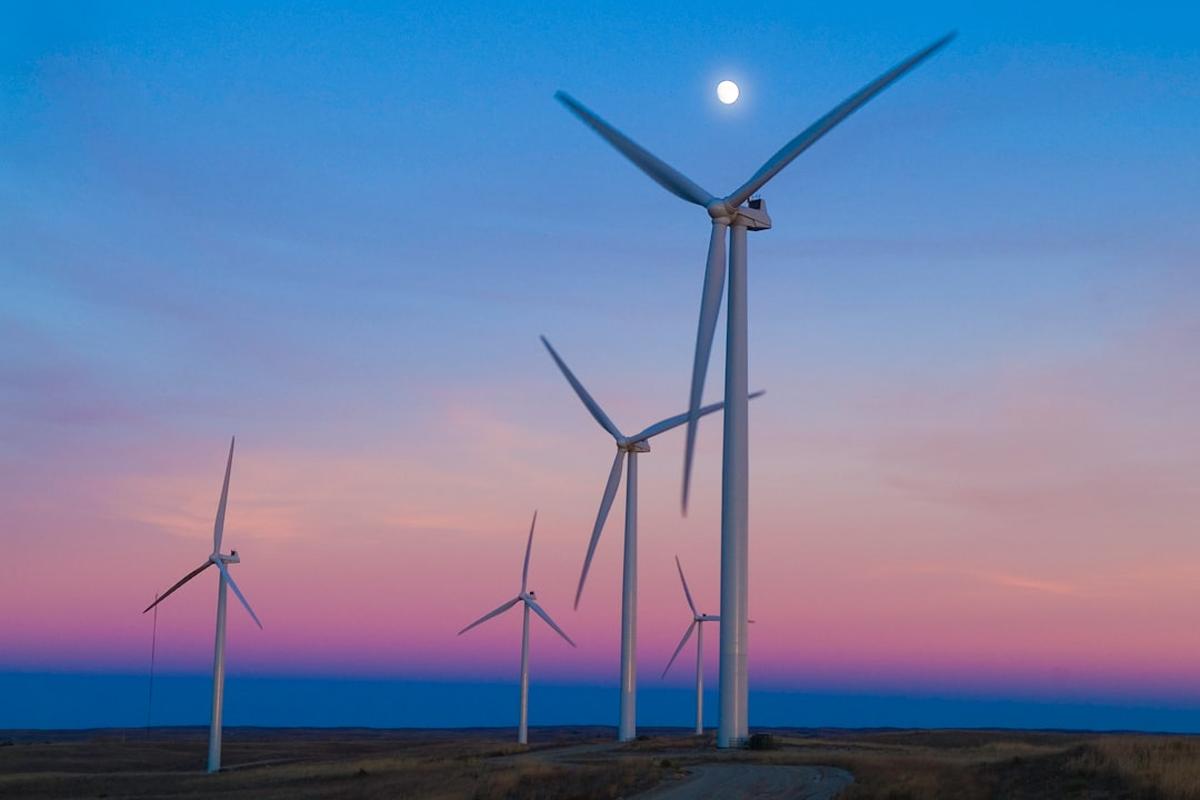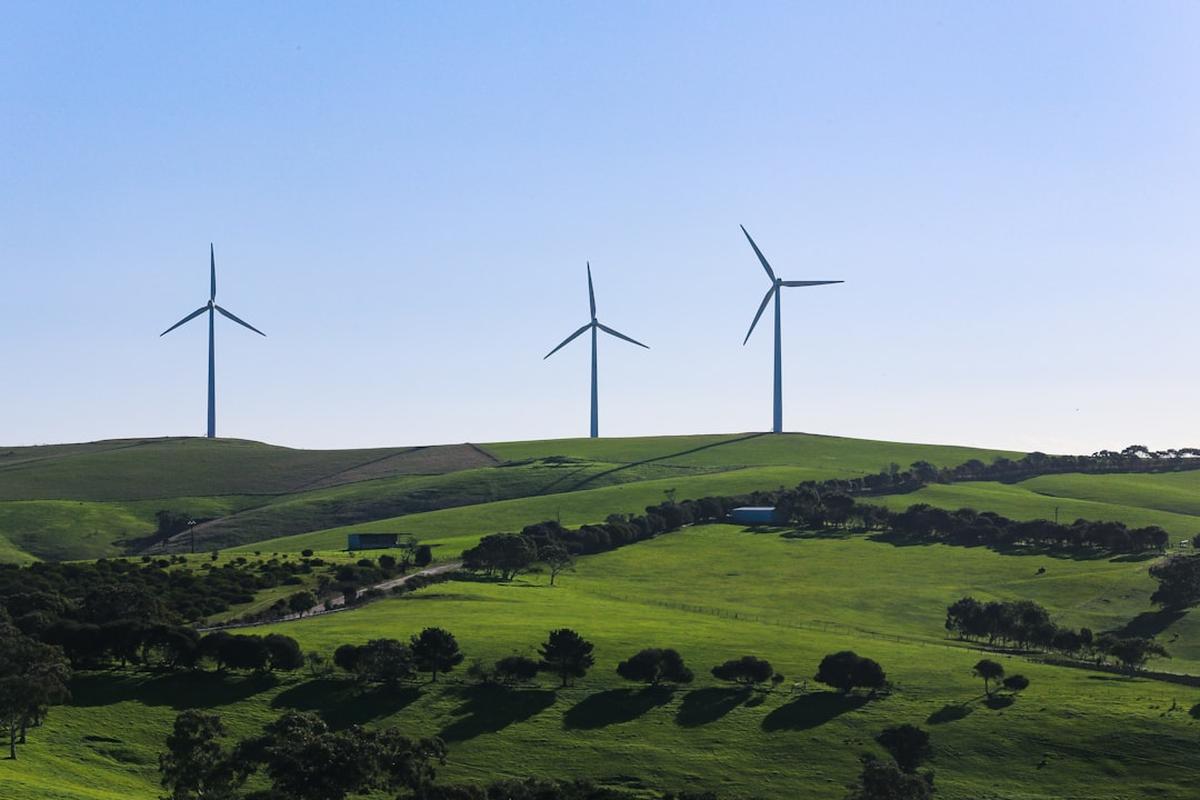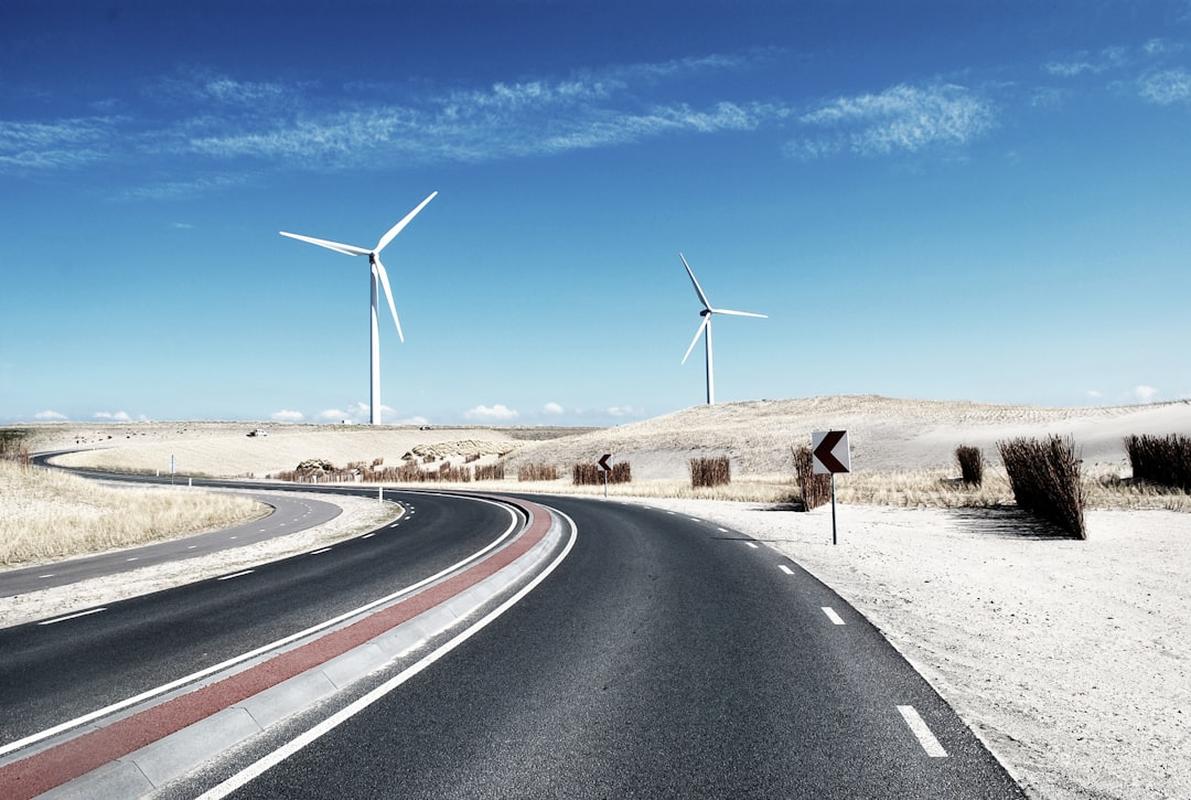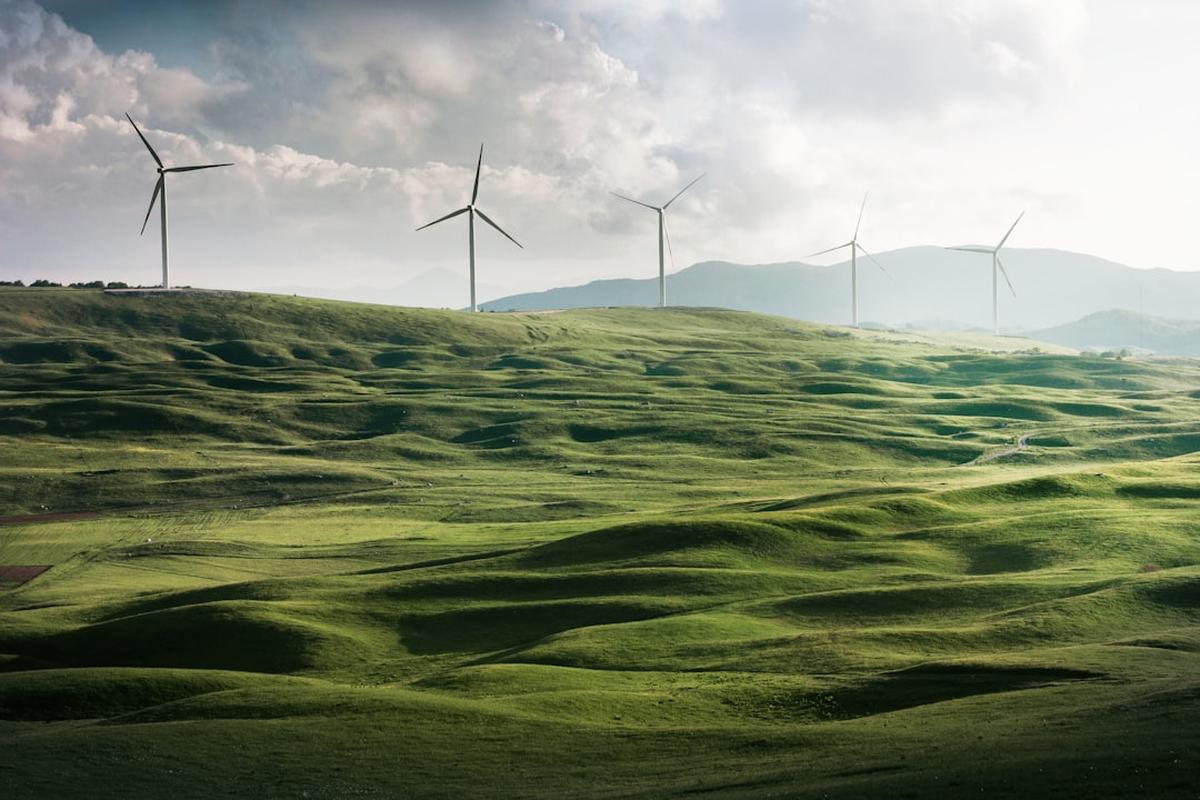Introduction to Wind Energy: Understanding the Basics
The world is facing a big challenge with climate change, and finding clean, renewable energy sources is more important than ever. Wind power is a game-changer in how we make electricity, giving us hope in the midst of environmental worries.
In the heart of this renewable energy revolution is a strong economic argument. Wind energy can help rural communities grow their economies, bringing in more tax money and new income sources. For example, each 100 MW of wind development in southwest Minnesota has brought in about $1 million per year in property taxes and $250,000 per year in lease payments to landowners. Plus, the cost of wind-generated electricity has dropped from almost 40 cents per kWh in the early 1980s to just 2.5-5 cents per kWh today, making it a cost-effective option compared to traditional fossil fuels.
But the advantages of wind power go beyond money. This renewable energy source produces very few greenhouse gases, which are balanced out by the clean power the turbines make within just 9 months of starting up. Turbines also save water, using 600 times less water than nuclear power and 500 times less than coal. And wind farms have a small impact on farming or grazing land, as they only take up a small part of the area.
Of course, no energy source is perfect. Wind turbines can be noisy and cause flickering shadows, which might bother nearby residents. Also, we need to keep an eye on wind energy’s ups and downs and make adjustments. But with better technology and careful planning, we can deal with these issues.
Looking ahead, wind energy offers a lot of promise. By using the power of the wind, we can make clean, renewable electricity, create jobs, help local economies, and protect our environment. It’s a bright spot in the fight against climate change, a smart solution that can change how we power our world. 1 2
 Photo by American Public Power Association on Unsplash
Photo by American Public Power Association on Unsplash
The Advantages of Wind Energy: Why It’s a Sustainable Choice
Wind energy is a fantastic renewable resource that offers a sustainable solution to our energy needs. Unlike fossil fuels, wind power generates electricity without releasing harmful emissions, making it a clean and environmentally-friendly choice. The cost of maintaining wind turbines and producing wind-based electricity is minimal once the initial infrastructure is in place, providing a cost-effective long-term energy solution.
Wind turbines can be strategically positioned in areas with consistent, strong winds, such as offshore locations, to maximize energy production. This flexibility allows wind farms to be established in remote, unpopulated areas, minimizing the impact on local communities. Furthermore, the small physical footprint of individual wind turbines ensures that the surrounding natural landscape remains largely undisturbed.
Wind energy is an unlimited, free, and renewable resource that can be harnessed to generate clean, non-polluting electricity.
While wind energy technology is still developing, ongoing innovations are steadily improving its reliability, efficiency, and cost-effectiveness. As the industry continues to evolve, the environmental benefits of wind power will become increasingly apparent. By reducing our reliance on fossil fuels, wind energy can play a crucial role in mitigating climate change and preserving the natural world for generations to come.
Admittedly, wind turbines do pose some challenges, such as potential impacts on wildlife and the visual landscape. However, these concerns can be addressed through careful planning and the implementation of mitigation strategies. As we work towards creating a more sustainable future, wind energy emerges as a compelling solution that balances environmental preservation with our growing energy needs. 3 4
 Photo by Alex Eckermann on Unsplash
Photo by Alex Eckermann on Unsplash
The Disadvantages of Wind Energy: Challenges and Limitations
While wind energy has gained significant traction as a renewable and eco-friendly power source, it is not without its drawbacks. As the article explores the challenges and limitations of this technology, it’s important to understand the detailed realities that wind energy developers and policymakers must deal with.
One of the main hurdles is the cost associated with offshore wind farms. Building and maintaining these structures in deep waters can be very expensive, often making them financially unfeasible for many regions. The production and installation of underwater power cables, a key part of offshore wind, also adds to the overall price tag. This financial burden can be a big deterrent for communities and governments looking to invest in renewable energy solutions.
Moreover, the tough environmental conditions inherent to offshore locations pose a unique set of challenges. The relentless wave action and high winds, especially during storms, can cause damage to wind turbines, leading to costly repairs and downtime. This vulnerability not only impacts the reliability of the energy supply but also raises concerns about the long-term sustainability of these installations.
- Offshore wind farms can be expensive and challenging to build and maintain, especially in waters deeper than 200 feet.
- Wave action and high winds, particularly during storms, can harm wind turbines.
- The production and installation of underwater power cables can be very costly.
Beyond the technical and financial hurdles, the environmental impact of wind farms, both onshore and offshore, remains a point of contention. The effects on marine ecosystems and bird populations are not yet fully understood, raising concerns among environmentalists and local communities. Additionally, the visual impact of wind turbines, especially when situated near the coastline, can be a source of discontent for residents and potentially affect tourism and property values.
As the world continues to seek viable renewable energy solutions, it’s crucial to approach the challenges of wind energy with a clear and balanced perspective. By acknowledging the limitations and addressing them directly, policymakers and industry leaders can work towards a more sustainable and fair energy future. 5 6
Conclusion: Weighing the Pros and Cons of Wind Energy
The world is facing a big challenge in shifting to renewable energy sources, and wind power seems like a really good option. The numbers show that in 2020, onshore wind electricity generation grew by 11%, with China and the US leading the way. This growth is not a coincidence; if we want to reach net-zero emissions by 2050, we need to increase wind power generation by 18% each year in this decade.
Onshore wind power, which is the most common type, saw a huge increase in capacity in China and the US in 2020. Offshore wind power is also becoming more popular, with the UK leading the charge. In fact, offshore wind power generated enough electricity for almost 40% of UK homes in 2020.
The great thing about wind power is that it’s renewable and clean. Unlike fossil fuels, wind will never run out, and it produces very little CO2 when generating electricity - only 11g per kilowatt-hour, compared to 980g for coal. Plus, the costs of wind power have dropped by 70% in the last decade, making it one of the cheapest sources of electricity available today.
But wind energy does have its challenges. Wind turbines can be dangerous for wildlife, with studies showing they kill between 140,000 and 500,000 birds each year. Also, building turbines in windy areas, often far from cities, means constructing power lines that can harm the environment.
When we think about the pros and cons of wind energy, it’s clear that this renewable source has a lot of potential. With its decreasing costs, clean generation, and ability to meet our growing energy needs, wind power is a glimmer of hope in the fight against climate change. 7 8
 Photo by Andrea Boldizsar on Unsplash
Photo by Andrea Boldizsar on Unsplash
References
-
“Pros Cons Wind Energy” - www.windustry.org ↩
-
“Wind Energy And The Environment” - www.eia.gov ↩
-
“What Are Advantages And Disadvantages Offshore Wind Farms” - www.americangeosciences.org ↩
-
“Pros And Cons Renewable Energy Sources” - geothermal.org ↩
